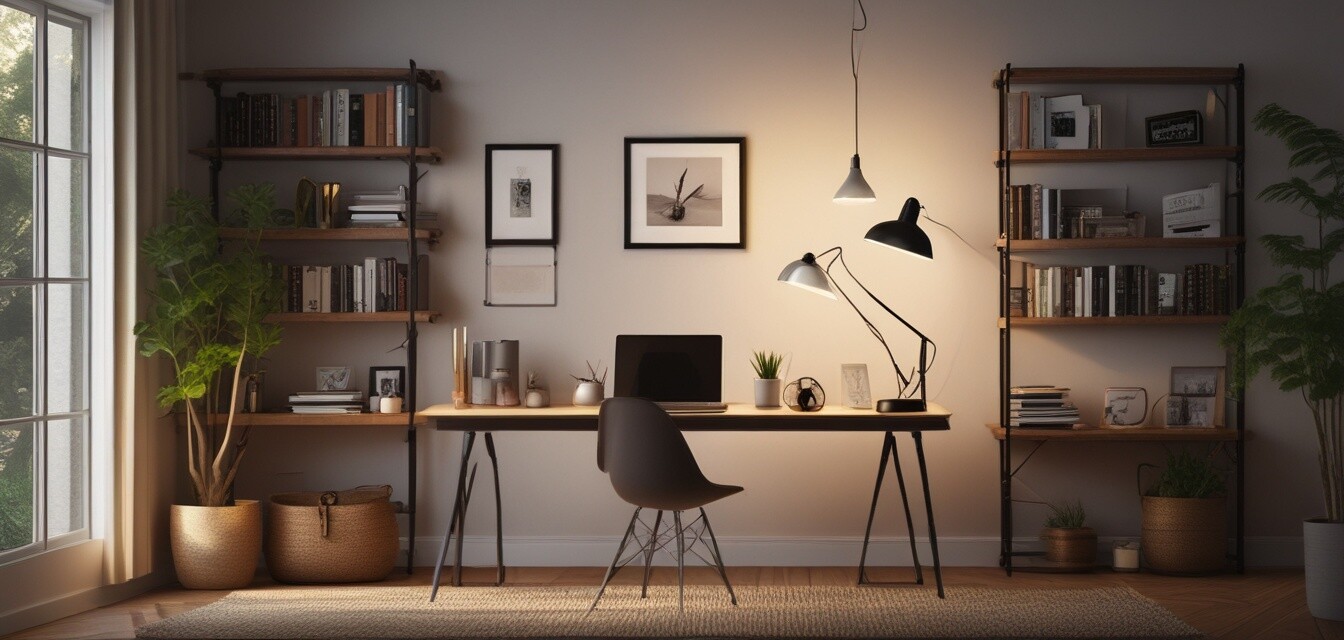
How to choose the right office lighting
Key Takeaways
- Optimal lighting minimizes eye strain and improves productivity.
- Types of lighting include ambient, task, and accent lighting.
- Consider the color temperature of your lighting options.
- Adjustable lighting solutions can enhance flexibility in workspace.
- Utilizing natural light can significantly boost your work environment.
Choosing the right lighting for your home office is essential to create a comfortable and productive workspace. Well-designed lighting can prevent eye strain, set the right mood, and enhance overall efficiency. This guide will provide you with insights into different types of office lighting and how to select the best options for your needs.
Understanding office lighting types
There are several types of office lighting to consider when setting up your home workspace. It’s important to combine these types to achieve the desired effect.
| Type of Lighting | Description | Pros |
|---|---|---|
| Ambient Lighting | The primary source of overall illumination in a room. | Provides a warm, inviting atmosphere. |
| Task Lighting | Focused lighting for specific tasks such as reading or writing. | Reduces eye strain by providing bright light where it's needed. |
| Accent Lighting | Highlights certain features of your workspace, like artwork or decor. | Adds character and depth to your office environment. |
Ambient lighting
Ambient lighting serves as the base level of illumination in your office. It’s generally soft and diffused, helping to minimize harsh shadows. Consider options such as:
- Ceiling-mounted fixtures
- Floor lamps
- Wall-mounted sconces
To learn more about enhancing your home office with effective lighting solutions, check out our buying guides for additional insights.
Task lighting
This type of lighting is pivotal for reducing eye strain while performing specific tasks that require attention to detail. Effective task lighting options include:
- Desk lamps with adjustable arms
- Clip-on lights for flexibility
- LED task lights for energy efficiency
Color temperature and its impact
Understanding color temperature is key to creating a productive workspace. Color temperature is measured in Kelvin (K) and typically ranges from warm (yellowish) to cool (bluish) light. Here’s a breakdown:
| Color Temperature (K) | Effect |
|---|---|
| 2700K - 3000K | Warm light promotes coziness and relaxation. |
| 3500K - 4100K | Neutral white light encourages productivity. |
| 5000K - 6500K | Cool light mimics daylight and enhances alertness. |
Adjustability for flexibility
Having adjustable lighting can significantly increase the functionality of your workspace. Consider using:
- Adjustable desk lamps for focused lighting
- Dimmable ceiling lights for ambient adjustments
Utilizing natural light
Whenever possible, take advantage of natural light in your home office. Position your desk near windows and consider using sheer curtains to diffuse the light. Natural light not only improves mood but also provides a dynamic element to your workspace. To explore the best desk setups for harnessing natural light, visit our setup inspiration section.
Conclusion
Choosing the right office lighting involves a careful balance of various lighting types, color temperatures, and positioning. By understanding the differences between ambient, task, and accent lighting, you can create a well-lit workspace that promotes productivity and comfort. Incorporating natural light and considering adjustable options further enhances your home office's functionality. Discover more tips and tricks in our comprehensive news and trends blog to elevate your workspace.
Pros
- Improves overall workspace environment and ambiance.
- Reduces eye strain and fosters comfort.
- Enhances productivity and focus.
- Can be tailored to personal preferences and tasks.
Cons
- Initial setup costs can be high.
- Overhead lighting may not always serve every task.
- Requires regular maintenance and bulb replacements.